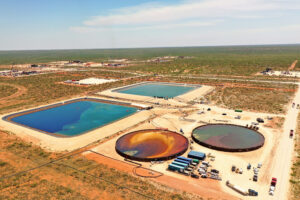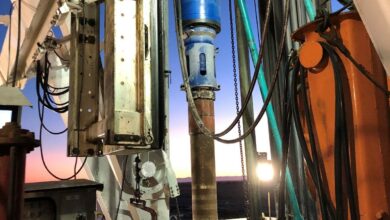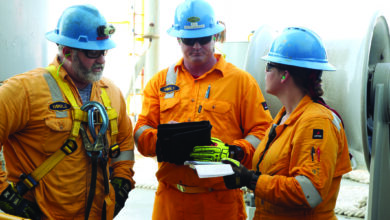Environment, Social and Governance
API introduces new template for climate reporting
Following the release of its Climate Action Framework earlier this year, API recently launched a new template for individual companies in the oil and natural gas industry to more consistently report and track greenhouse gas (GHG) indicators.
While many companies have reported GHG indicators for over 20 years, the template aims to provide a consistent and uniform set of core GHG indicators, enabling greater comparability in climate-related reporting. The template was developed in consultation with API members, the financial sector, policymakers, industry customers and other interested parties.
The template standardizes the names of indicators, units of measure, and the detailed definitions for reporting boundaries to prompt comparable reporting from one company to another. It also prompts for data on Scopes 1 and 2 GHG emissions and consists of core GHG emissions indicators that companies can voluntarily report publicly.
Further, the template includes indicators on a company’s efforts to mitigate GHG emissions, a place to indicate a company’s GHG targets and other climate reporting resources, and a section where a company can indicate its third-party verification of GHG reporting.
The GHG mitigation section contains indicators on the capture of CO2 for utilization or storage, the purchase of credits for renewable energy, and total offsets retired by the company. This gives a foundational picture of a company’s work to mitigate emissions.
API expects to release additions to the template focused on GHG emissions intensity indicators later this year.
VELESTO focuses on better employee communications around sustainability
Speaking at a “fireside chat” held this summer by the Malaysia chapter of the nonprofit organization 30% Club, Rohaizad Darus, President of Velesto Energy Berhad, outlined the challenges faced by the oil and gas industry in convincing stakeholders to invest in a sustainability agenda. He also discussed the ways in which Velesto has been able to drive sustainability efforts within its own organization.
Mr Darus said Velesto has focused on building a robust infrastructure to implement its value system and deploy initiatives such as its iLEAP (integrity, leadership, excellence, agility, people-focused) core value system. However, translating those values into a sustainability agenda requires financial commitment and planning, which can sometimes compound existing cost and operational issues.
To help overcome such challenges, Velesto has prioritized communications, both formal and informal, with employees, to ensure better understanding of the benefits of sustainability and its overall impact. The company also continues to allocate budget – albeit at a smaller scale – to maintain momentum on sustainability efforts. A key element, Mr Darus said, is to prioritize what can be achieved and manage expectations where necessary. The company also continues to work on incorporating emissions reporting.
Halliburton expands clean energy program
Four additional companies have joined Halliburton Labs’ Clean Energy Accelerator program. Alumina Energy is developing zero-carbon heat and power solutions to address greenhouse gas emissions. Ionada offers a patented membrane contactor carbon management system for industrial emitters of up to 200,000 tons/year. Parasanti delivers a fully integrated solution to meet data analytic challenges through edge computing hardware and software in environments with no or low bandwidth. SurgePower Materials produces high-purity graphene from an abundant renewable raw material using a patented manufacturing process.

GECF workshop explores ways to reduce methane emissions
As part of its Environmental Knowledge and Solutions initiative, the Gas Exporting Countries Forum (GECF) held a workshop in June exploring ways to tackle methane emissions in gas production.
“Methane emissions as a topic has historically been complex due to lack of data transparency and due to difficulty in quantifying and detecting the primary source,” said Yury Sentyurin, Secretary General of the GECF. “The good news is that our industry has practices in place to monitor, reduce and prevent methane emissions.”
Methane is more than 25 times as potent as CO2 at trapping heat in the atmosphere. Agricultural activities are the biggest contributor to methane emissions, followed by the oil and gas industry, accounting for around 25%. Approximately 77% of that comes from the upstream sector.
Citing UN statistics, Mr Sentyurin noted that around 80% of the oil and gas industry’s methane abatement practices could be implemented at a negative or low cost.
Key messages presented at the workshop include:
• Data transparency would speed up the progress of the industry against methane emissions;
• Methane abatement technologies are a means of generating revenue for operating companies; and
• Currently available data on abatement practices serve as a guide only. Understanding the context of the asset coupled with innovation will decide the actual cost of abatement.
Precision Drilling creates environmental team, launches Evergreen ESG solutions
Precision Drilling announced several key ESG accomplishments aligned with the company’s “High Performance, High Value” strategy as part of the release of its annual Corporate Responsibility Report in July.
The report – the company’s second – provided an outline of ESG strategies, focus areas and performance. Highlights include:
• New and existing technologies to reduce wellsite greenhouse gas (GHG) emissions;
• Partnership in geothermal energy development;
• Creation of environmental and social teams;
• Increased investment in employees and communities;
• Expanded ESG metrics in performance-based compensation plans.
The “E-Team” was established earlier this year to bolster Precision’s sustainability efforts, specifically those relating to the environment and emissions reduction. The team encompasses a diverse group of leaders from across the organization and is focused on coordinating and developing strategies, plans and technologies to further reduce environmental impact while improving efficiency, return on investment and social perception for Precision’s customers.
Precision also launched its EverGreen suite of environmental solutions, which includes:
• EverGreen Monitoring: The Integrated Power & Emissions Monitoring System provides environmental insights as they occur, monitoring fuel consumption (diesel and natural gas), power generation KPIs and real-time GHG emissions. Measurements may be extended to boilers, refueling stations and flare lines with comprehensive power and emissions reports.
• EverGreen Energy: Digitally enabled drilling rigs, along with access to oilfield data and analytics, have decreased drilling time, leading to lower GHG emissions. The next step-change will be delivered through onsite power generation, displacing diesel fuel as the primary fuel source for drilling operations.
• EverGreen Fuel Cell: Precision is exploring technologies and partnerships that will enable the company to incorporate hydrogen into its emissions reduction strategy. Hydrogen fuel cells can be used to convert hydrogen directly into electric power, and hydrogen blending can combine hydrogen with diesel and/or natural gas to increase efficiency and reduce GHG emissions.

Produced water recycling project achieves 140,000 bbl/day
De Nora, a provider of wastewater treatment solutions, has completed phase one of its Delaware Basin wastewater recycling project, achieving produced water rates above 140,000 bbl/day. That equals a total of more than 5 million barrels over a 30-day period, marking the highest quantity recorded in the company’s history.
The project established four ClorTec Mobile Treatment Units along a network of simultaneous fracturing systems. The setup allows producers to target areas of concern at any point in the upstream or midstream water utilization cycle, tapping into existing pipelines or feeding directly off saltwater disposal wells. This reduces the reliance on freshwater for planned fracturing activity while eliminating the emissions traditionally required for the transport of water to site.
De Nora’s electrochlorination process kills bacteria populations without hazardous chemicals, enhancing safety for workers on site, as well as the surrounding environment. Solar salt, used in place of complex chemicals, is sourced through renewable wind and solar processes and reduces trailer traffic compared with chemicals and water transport.
Wood Mackenzie report: CCS clusters can help in scaling up carbon removal
In a recent report, Wood Mackenzie discussed research showing that simply avoiding carbon will not be enough to achieve the 2°C goal of the Paris Agreement. To cap global warming at 1.5°C or even 2°C, they said, carbon removal will be essential. To do that at scale, the industry must unlock potential economies of scale through basin-wide carbon capture and storage (CCS).
The most established CCS technologies are energy intensive. This drives up costs, especially for applications with low-concentration CO2 source streams, such as cement or steel. Newer technologies are less energy intensive but have lower capture rates and are less scalable.
Wood Mackenzie said CCS clusters could play a pivotal role. CCS clusters and hubs could link multiple industrial emission point sources with common storage locations through shared transport infrastructure. Shared costs and liabilities would help to de-risk the project for all participants and can make CCS feasible for smaller point sources, for which the solution would not otherwise be economical.
“We screened about 1,500 fields globally that could be possible candidates for large-scale carbon storage, with 62% of these in North America alone,” said Amy Bowe, Head of Carbon Research. DC



